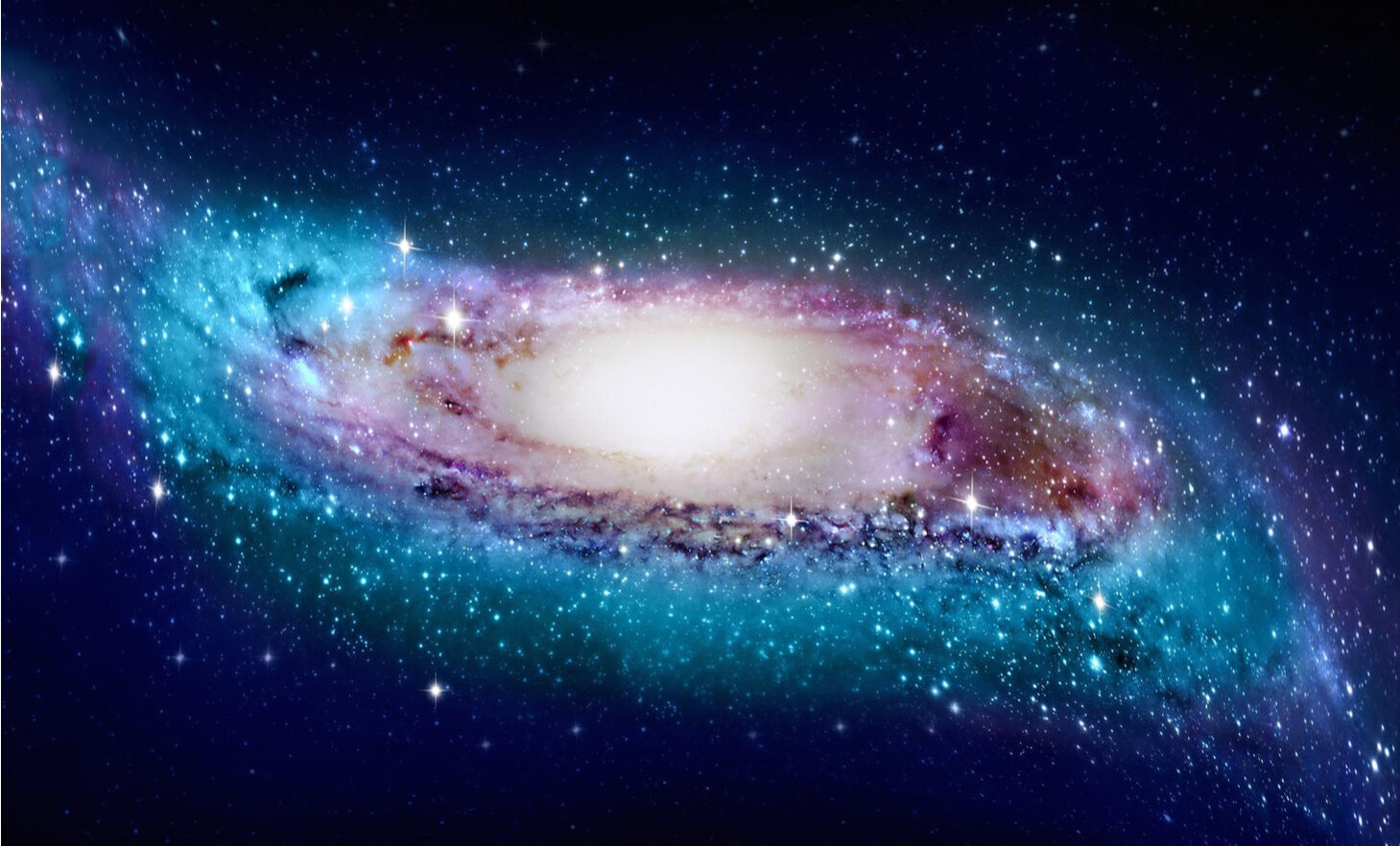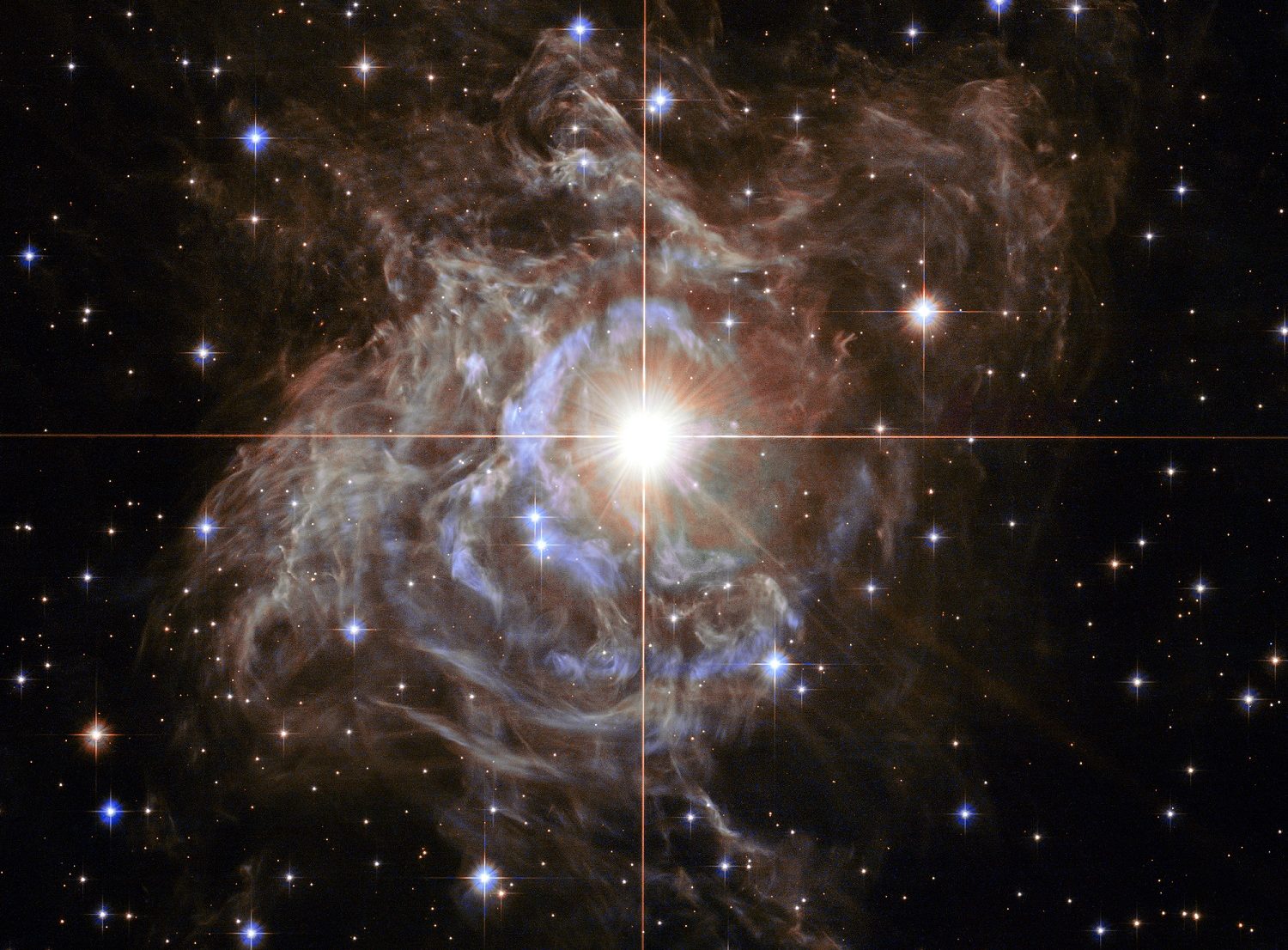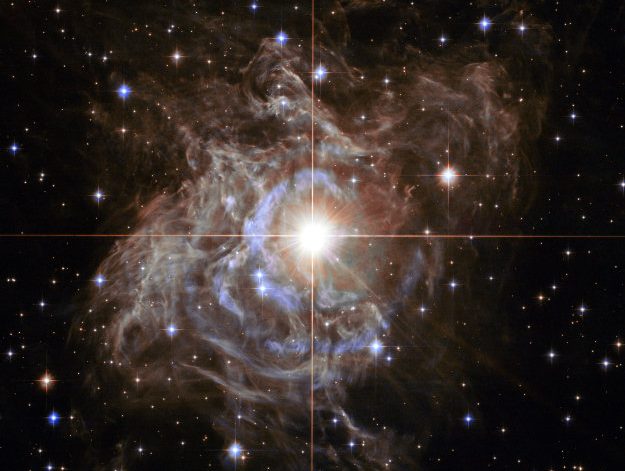6,500 light-years away in the southern constellation Puppis an enormous star pulses with light and energy, going through the first throes of its death spasms as it depletes its last reserves of hydrogen necessary to maintain a stable, steady radiance. This star, a Cepheid variable named RS Puppis, brightens and dims over a 40-day-long cycle, and newly-released observations with Hubble reveal not only the star but also the echoes of its bright surges as they reflect off the dusty nebula surrounding it.
The image above shows RS Puppis shining brilliantly at the center of its dusty cocoon. (Click the image for a super high-res version.) But wait, there’s more: a video has been made of the variable star’s outbursts as well, and it’s simply mesmerizing. Check it out below:
Assembled from observations made over the course of five weeks in 2010, the video shows RS Puppis pulsing with light, outbursts that are then reflected off the structure of its surrounding nebula. What look like expanding waves of gas are really “light echoes,” radiation striking the densest rings of reflective dust located at farther and farther distances from the star.
According to the NASA image description:
RS Puppis rhythmically brightens and dims over a six-week cycle. It is one of the most luminous in the class of so-called Cepheid variable stars. Its average intrinsic brightness is 15,000 times greater than our sun’s luminosity.
The nebula flickers in brightness as pulses of light from the Cepheid propagate outwards. Hubble took a series of photos of light flashes rippling across the nebula in a phenomenon known as a “light echo.” Even though light travels through space fast enough to span the gap between Earth and the moon in a little over a second, the nebula is so large that reflected light can actually be photographed traversing the nebula. (Source)
RS Puppis is ten times more massive than our Sun, and 200 times larger.
Cepheid variables are more than just fascinating cosmic objects. Their uncanny regularity in brightness allows astronomers to use them as standard candles for measuring distances within our galaxy as well as others — which is trickier than it sounds. Because of its predictable variation along with the echoing light from its surrounding nebula, the distance to RS Puppis (6,500 ly +/- 90) has been able to be calculated pretty accurately, making it an important calibration tool for other such stars. (Read more here.)
Source: ESA news release
Full image credit: NASA, ESA, and the Hubble Heritage Team (STScI/AURA)-Hubble/Europe Collaboration. Acknowledgment: H. Bond (STScI and Penn State University)
P.S.: Cepheid variables don’t last forever, though — sometimes they stop.




